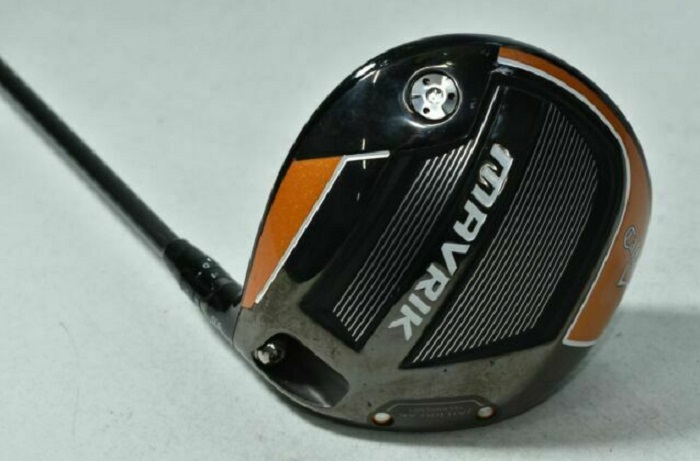Is A Heavier Driver Head Better – Everything You Need To Know

I have often heard amateur golfers advise other amateur golfers to fit their driver’s head with more weight. They say it is because it offers more perks than a lighter head.
However, adding weight to your driver’s head impacts other elements of your swing that you may not appreciate.
In this post, we answer the question is a heavier driver head better. We will look at the pros and cons of each to help you determine if you need to add or subtract weight from your driver’s head.
Driver Head Weight Overview

The weight of your driver’s head impacts your swing speed, smash factor, ball flight, and shaft. Mackenzie et al (2015) found that the three common driver head weights are 174 g, 190 g, and 200g.
Hitting a 200g driver head can increase your smash factor, but it can reduce your swing speed and lower your launch, possibly even leading to that dreaded slice off the tee.
A 174g driver head can increase your clubhead speed, launch, and spin. However, faster swinging players may gain excessive height off the tee and sky their drives.
Does Driver Head Weight Really Make A Difference?
Yes, driver head weight makes a difference to your swing. In a previous article on driver head weight, I detailed how a heavy driver head increases the overall mass of your club.
That setup difficult for slower swinger golfers to launch.
That is why, whenever you increase the weight of your driver’s head, you should adjust the weight and flex of your shaft. Unless you already have a light and flexible shaft that requires a heavier driver head.
Conversely, a light driver head with a light shaft can cause faster-swinging golfers to balloon their tee shots and lose distance.
How Will Driver Head Weight Affect Performance
Heavier Driver Head Increases Spin Rate
Mackenzie et al (2015) found that increased driver head mass caused the average golfer to generate increased side spin that induces a fade or a slice.
Furthermore, a heavier head induces a lower ball flight and less spin, making it difficult for slower swinging players to launch.
Lighter Driver Head Increases Swing Speed
A lighter driver helps you increase your clubhead speed and swing speed. However, players with faster swing tempos may generate excessive backspin and balloon their shots, resulting in a loss of distance.
Will A Heavier Head Hit It Further

It depends on your swing speed, ball speed, and backspin RPM.
Players who swing a driver over 105 mph, might benefit from the low launch and reduced spin of a heavier head, leading to maximum distance.
Conversely, if your swing speed off the tee is below 83 mph, you may struggle to optimize your ball speed, leading to a low spinning launch that costs you yards.
What Weight Should My Driver Head Be?
Instead of spending time trying to self-diagnose your ideal driver’s head weight, I suggest undergoing a fitting from a professional.
They will set you up on a launch monitor, and after a few shots, identify the most suitable option for your game.
However, if you prefer to self-diagnose your ideal head weight, you can look to the test conducted by Mackenzie et al (2015).
The authors observed that a 174-gram driver head delivered more ball and clubhead speed than 190 or 200 grams.
A 200-gram driver head, on the other hand, increases your smash factor. According to Ping, the higher your smash factor is, the faster your ball speed to clubhead speed ratio is.
Increased ball speed leads to a powerful launch and optimal distance.
Pros Of A Heavier Driver Head
Smash Factor
Driver heads with increased mass deliver impressive smash factor compared to lighter designs.
In the study by Mackenzie et al, they found that a 200-gram driver produces an average smash factor of 1.45, while a 174 gram generates 1.42.
What this means is that a 200-gram driver generates 1.45 times the ball speed relative to clubhead speed.
Theoretically, that ratio gives you a better chance at increasing your distance.
Dynamic Loft
Heavier driver heads tend to produce a lower degree of dynamic loft at impact.
That can induce a lower launch for slower swinger players.
However, it is welcomed by fast swingers looking for a consistently low launch with minimal speed for increased distance.
Less Spin
To maximize your distance, you need a combination of explosive ball speed and low spin.
A hefty driver head produces less spin than a lighter driver, setting faster swinging golfers up for the optimal yardage.
Increased Distance
The lower dynamic loft of a heavy driver head combined with reduced spin rpm produces optimal distance for fast swinging golfers.
Cons Of A Heavier Head
Decreased Clubhead Speed
The biggest downside of a heavier driver head is that it reduces your clubhead speed.
That makes it difficult for players with slow tempos to optimize their ball speed at impact, leading to a weak launching shot and a loss of distance.
Slices
Mackenzie’s study identified a trend of sliced shots when players hit a 200-gram driver head.
The reason for this stems from players struggling to square their face up at impact and generating excess fade spin.
If you are slicing your shots, you might need a lighter driver head. Conversely, if you struggle with a hook, a heavier head may improve your results.
Pros Of A Lighter Driver Head
Clubhead Speed
Contrary to their findings on heavier driver heads, Mackenzie and his team discovered that driver heads with a reduced mass led to increased clubhead speed.
Slower swingers may appreciate the extra speed to help them transfer the energy to the ball at impact for an enhanced launch.
Spin
While less spin is ideal for maximum distance off the tee, you need some spin to help you get the ball airborne.
Slower swingers struggle to generate sufficient ball speed and spin to send the ball skywards when playing with a heavy driver head.
Launch
The lighter construction of these driver’s heads is user-friendly for slower swinging golfers to generate sufficient speed to achieve a high, powerful launch.
Cons
Reduced Smash Factor
Based on the Mackenzie study, we see that lighter driver heads produce reduced smash factor compared to those with more mass.
That means that players have a lower ball speed to clubhead speed ratio, which technically leads to less distance.
Excessive Spin
Lighter driver heads can cause faster-swinging golfers to generate excessive spin levels, resulting in lost distance.
Apex
Excessive spin and a lighter driver head are not ideal for fast swingers who are prone to ballooning their tee shots. Skying your drive reduces your carry distance and roll.
Can I Add Weight To My Driver Head?

There are a variety of drivers on the market that enable you to add or remove custom weights from your driver.
However, if you do not enjoy this luxury, you can add lead tape to the sole, if you need to increase the mass.
Shaft Weight vs Head Weight?
In my previous article on driver head weight, I delved into the effects of weight on your shaft. If you increase the mass of your head, you may need to reduce the flex and weight of your driver shaft.
A heavier head increases the overall weight of the driver, which can make it challenging to get your tee shots airborne if you are a slower swinger. Conversely, a lighter driver head may require a stiffer, heavier shaft that helps reduce spin and promotes a piercing ball flight.
How To Know Your Driver Head Is Too Light?
We have already looked at a few symptoms of a light driver. These include generating excessive spin, a reduced smash factor, and ballooning drives.
Furthermore, your driver’s head may be too light if you hook your drives more often than not. These are problems faced mostly by golfers with faster swing speeds.
How To Know If Your Driver Head Is Too Heavy?
Contrary to the factors determining if your driver’s head is too heavy, here is how you know if the weight is excessive for your swing.
For starters, you will experience reduced clubhead speed. And you may be prone to slicing your tee shots.
A heavy driver head is challenging for slower swingers to launch their shots consistently, leading to reduced distance.
Conclusion On Is A Heavier Driver Head Better?

After delving into the question is a heavier driver head better, we now know that the answer is yes and no. A heavy driver head suits players with faster swing speeds looking for less dynamic loft to induce a low launching shot with minimal spin.
A driver head with an increased mass also increases your smash factor compared to lighter designs. However, it is not all rosy as a heavier driver has several downsides for slow swinging players.
The most common disadvantage is the reduction in clubhead speed, while they also open you up for a slice or pushed shot.
In conclusion, if you are a faster swinging golfer, you may enjoy more advantages from adding weight to your driver’s head than removing it.
So, if you are looking for a higher smash factor from your club, it is time to start adding some weight.

